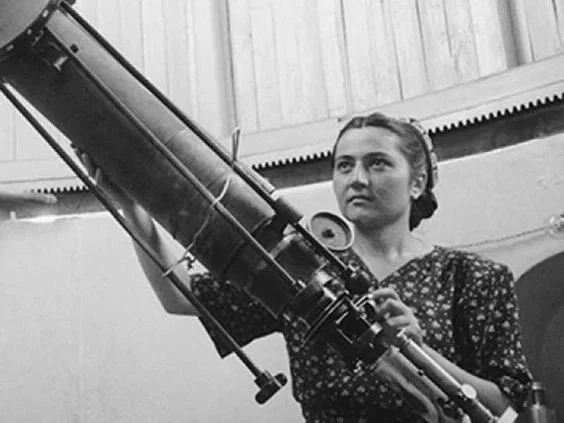Cecilia Payne Yourself: The Brilliance of Discovering What You’re Made Of
In 1925, a young scientist named Cecilia Payne shook the world of astronomy. Up until then, everyone thought the stars — our Sun included — were made up of heavy elements like iron, because that’s what made sense based on Earth. But Cecilia, in her quiet brilliance, discovered that stars are actually made mostly of hydrogen and helium — light elements that no one saw coming. She changed everything by proving the stars were far lighter and more powerful than we ever imagined.
Cecilia Payne-Gaposchkin is known for her explanation of stellar spectra, the composition of the Sun, and more than 3,000,000 observations of variable stars.
That got me thinking: we’re all told what we’re made of. Society, family, and even our own self-doubt give us this heavy script of what we’re supposed to be. I felt that for a long time, especially when it came to my queerness. The weight of expectations, fear, and shame felt like iron and lead pressing on me, making me believe I had to be something I wasn’t.
But then, just like Cecilia discovering the true nature of stars, I made a discovery about myself: I’m queer, and that’s the lightest, brightest thing about me. When I accepted my queerness, it was like realizing I wasn’t made of the heavy stuff that weighed me down. It was a little terrifying at first — discovering the truth can be — but once I started loving and embracing the queer parts of me, everything felt lighter. I began to shine in ways I didn’t even know were possible.
And that’s the thing about queerness — it’s about discovering your authentic self, past all the layers of what people tell you you’re supposed to be. The world can throw heavy expectations your way, but when you stop trying to fit into a mold that wasn’t made for you, you start to burn brightly in your own way. You realize, like Cecilia Payne did with the stars, that you’re made of something different, something powerful and boundless.
For me, queerness wasn’t just a part of myself that I had to accept — it became the fuel that set my whole life alight. It’s my hydrogen and helium. When I stopped trying to hide or diminish the queer parts of me, I realized I had been living under someone else’s assumptions about what I was made of. But now? I’m living in my truth, shining in my own light.
And here’s what I’ve learned: you get to discover for yourself what you’re truly made of. No one else can tell you. It might not be the prevailing narrative of your lifetime, and it might not be what people expect, but it’s yours. You get to define yourself. You get to be the star you were always meant to be.
So, here’s my ask: Cecilia Payne yourself. Don’t let the world tell you who you are. Go on that personal journey of self-discovery and find out what makes you light, what makes you shine. Maybe, like me, that journey involves acknowledging your queerness, or maybe it’s something else entirely. Whatever it is, trust it. Trust the brilliance inside you. And when you find it, don’t ever stop shining.
Because you, my friend, are a star. And stars were never meant to be heavy — they were meant to burn bright.
“The cosmos is within us. We are made of star-stuff. We are a way for the universe to know itself.”
In this Hubble portrait, the giant red nebula (NGC 2014) and its smaller blue neighbor (NGC 2020) are part of a vast star-forming region in the Large Magellanic Cloud, a satellite galaxy of the Milky Way, located 163,000 light-years away. The image is nicknamed the "Cosmic Reef," because NGC 2014 resembles part of a coral reef floating in a vast sea of stars.

